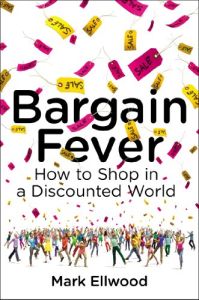Join getAbstract to access the summary!

Join getAbstract to access the summary!
Mark Ellwood
Bargain Fever
How to Shop in a Discounted World
Portfolio, 2013
What's inside?
Bargain hunters have more arrows in their quiver than ever before. Learn how to hit your targets.
Recommendation
Increased abundance and choice, the end of mass advertising, and transparency forced by the Internet are driving seismic changes in how retail buyers shop. Consumers know that today’s price tags “were not put there by the great printer in the sky,” but are often vulnerable to smart bargain hunters’ tactics. Retail journalist Mark Ellwood explains how shoppers can wield power, demand discounts, find savings and force sellers to capitulate. His dry sense of humor and creative phrasing add up to an especially enjoyable read. He might have included bulleted lists or end-of-chapter summaries to highlight his important points, but his afterword does offer 100 bargain-hunting tips to help convert “even a markdown newbie into a seasoned retail hacker.” getAbstract recommends Ellwood’s entertaining, practical and content-rich primer especially to marketers, as well as investors, wholesalers, and retail buyers and sellers, online and offline.
Summary
About the Author
Journalist Mark Ellwood specializes in the subject of retail and has written for The Wall Street Journal, The New York Times and Condé Nast Traveler.
















Comment on this summary